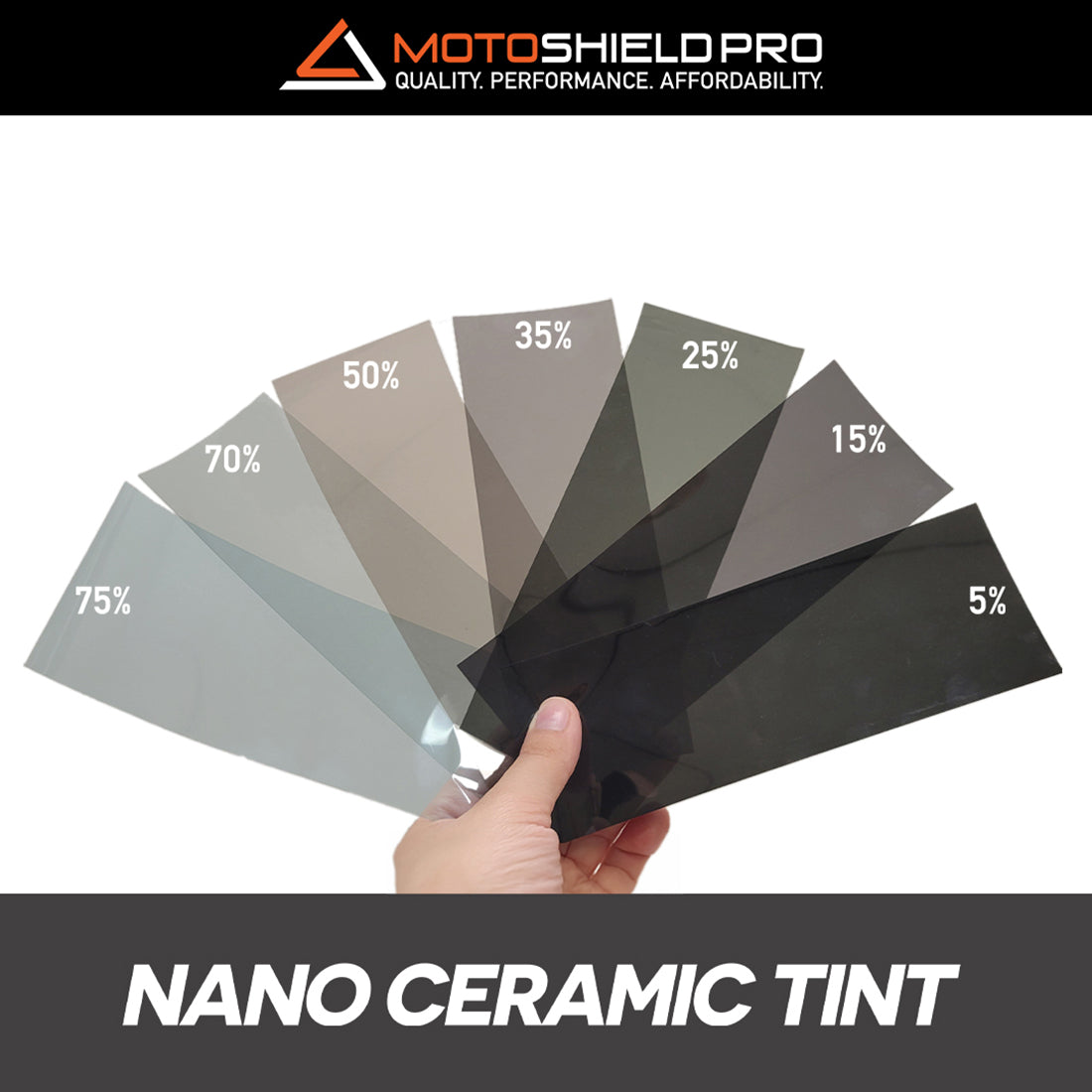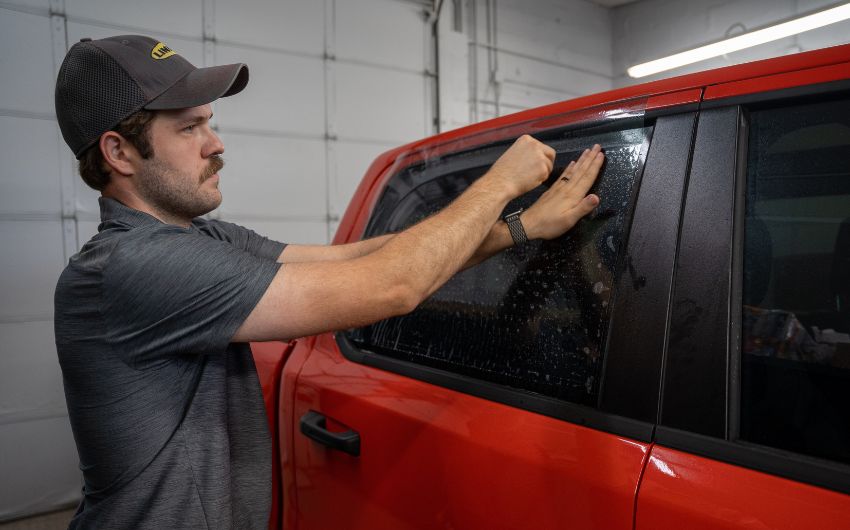Vehicle Window Tinting: Long-Lasting Protection for Your Cars and truck's Windows
Vehicle Window Tinting: Long-Lasting Protection for Your Cars and truck's Windows
Blog Article
Window Tinting Laws and Standards: What You Required to Know Prior To Tinting Your Vehicle
Prior to waging window tinting for your vehicle, it is important to acquaint on your own with the varied regulations and standards that regulate this practice throughout different states. These laws dictate the permissible degrees of tint darkness, commonly gauged by noticeable light transmission (VLT) percentages, and include details terms for front windscreens focused on making sure road safety and security. In addition, certain territories might use clinical exceptions for people with qualifying conditions. Recognizing these complexities can conserve you from prospective legal ramifications, however what are the certain policies in your state?
Review of Home Window Tinting Regulations
Home window tinting legislations are often subject to variation throughout various jurisdictions, showing local policies and safety and security considerations. These regulations dictate the permissible degrees of tint darkness and reflectiveness on automobile windows, making certain that motorists maintain appropriate exposure while additionally safeguarding versus unsafe UV rays and heat.
A lot of policies identify window tinting based upon the Visible Light Transmission (VLT) percentage, which suggests the quantity of light that can pass via the home window. Generally, lower VLT portions symbolize darker colors. Regulations typically differentiate in between the front, side, and back home windows, with stricter limitations put on the front windscreen to boost safety and security for both the vehicle driver and other roadway individuals.
In addition, some territories enforce restrictions on the reflectivity of the tint, stopping excessive glare that can harm exposure. Exceptions to these laws may exist for people with particular clinical conditions requiring additional sunlight defense. Compliance with window tinting guidelines is critical, as infractions can cause penalties, required removal of the color, and prospective rises in insurance costs. For that reason, it is essential for car owners to familiarize themselves with neighborhood regulations prior to waging home window tinting installations.
State-by-State Color Laws
Understanding the particular window tinting guidelines in each state is essential for lorry proprietors seeking to adhere to the regulation. Each state in the united state has developed its own collection of guidelines regulating window tinting, which can vary considerably. These guidelines commonly dictate the allowable degrees of tint darkness, the kinds of windows that can be tinted, and any type of clinical exceptions that might apply.
For example, states like The golden state have stringent constraints on tint darkness for front windows, while others, such as New Mexico, might enable darker colors. In addition, certain states mandate details visibility percents for different home windows, including the windshield, front side home windows, and rear home windows. It is vital for car proprietors to acquaint themselves with their state's regulations to stay clear of prospective fines or penalties.
Moreover, some states might need an accreditation sticker to be positioned on tinted home windows, suggesting conformity with state regulations. Failure to stick to these guidelines not only risks legal consequences but can additionally affect security and exposure while driving. Car owners must conduct comprehensive research or seek advice from local authorities to make certain full understanding and compliance with state-by-state tint guidelines.
Allowed Tint Degrees and Types
Numerous vehicle owners might be stunned to find out that permitted color degrees and types vary extensively throughout different click states. Each state has actually established its very own regulations relating to the allowable darkness and reflectivity of home window color, commonly determined by Visible Light Transmission (VLT) portions. VLT describes the quantity of light that can go through the tinted windows; hence, a lower portion shows a darker tint.

Furthermore, the types of tint materials allowed can vary, with some states restricting mirror-like or metallic coatings. It is necessary for vehicle proprietors to acquaint themselves with their state's particular laws to ensure conformity. Non-compliance can result in penalties, obligatory removal of the tint, or various other legal repercussions, making it vital to understand these guidelines prior to waging installation.
Medical Exemptions for Tinting
While not all states give allowances for medical exceptions pertaining to window tinting, those that do acknowledge the necessity for specific people to enhance presence and convenience due to clinical conditions. Various clinical conditions, such as lupus, skin cancer cells, and certain eye conditions, can provide individuals particularly delicate to sunshine. As a result, these individuals may require darker tints to safeguard themselves from harmful UV rays and glow.

It is necessary to keep in mind that despite a clinical exception, there may still be limitations on the degree of tint enabled. Compliance with state regulations makes sure that individuals are both protected and within legal limits. Those considering clinical exceptions need to call their neighborhood Division of Motor Cars or equal authority to understand the procedures and demands necessary to use for an exception effectively.
Fines for Non-Compliance
Stopping working to abide by home window tinting legislations can result in significant fines, which vary by state. Law enforcement agencies are equipped to provide citations for lorries that do not abide by the defined tinting guidelines. These penalties generally include penalties, which can vary from moderate total up to a number of hundred dollars, depending upon the seriousness of the offense and the state concerned.
In some territories, repeated offenses might cause escalating fines or extra fines, such as necessary court appearances. Non-compliance might necessitate the removal of prohibited tinting, usually at the owner's cost. In severe cases, habitual wrongdoers may deal with suspension of their lorry registration till compliance is attained.
In additional hints addition, insurance policy ramifications may occur from obtaining several citations for window color infractions. Insurance firms might see such offenses as a sign of riskier habits, potentially bring about increased premiums or difficulty in protection.
To stay clear of these charges, it is critical for automobile owners to familiarize themselves with their neighborhood home window tinting legislations and make certain that their vehicle complies (Window Tinting). This proactive strategy not just avoids legal implications however also promotes road safety
Final Thought

Most policies identify window tinting based on the Visible Light Transmission (VLT) percent, which suggests the amount of light that can pass via the home window. Conformity with home window tinting policies is important, as offenses can result in fines, necessary elimination of the tint, and prospective rises in insurance coverage premiums.Recognizing the details home window tinting regulations in each state is essential for vehicle owners looking for to comply with the law. These guidelines typically determine the permitted levels of color darkness, the types of windows that can be tinted, and any type of clinical exceptions that may apply.
For circumstances, states like California have rigid restrictions on tint darkness for front home windows, while others, such as New Mexico, may allow darker colors.
Report this page